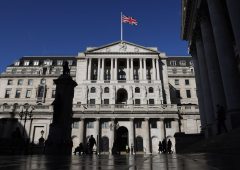Bank of Russia Confirms Digital Ruble Will Be Widespread by 2031
02.08.2024 16:00 1 min. read Alexander Stefanov
Bank of Russia Governor Elvira Nabiullina has stated that Russia’s digital ruble is on track to become widely adopted within the next five to seven years.
Speaking recently at the Federation Council, Nabiullina highlighted the advantages of CBDCs, including free transfers for individuals and reduced fees for businesses, which she believes will drive the digital ruble’s integration into everyday life by 2031.
The digital ruble, which is currently in a pilot phase with 13 local banks testing its features, aims to complement existing payment methods and offer interest-free transactions. The pilot includes testing digital wallets and peer-to-peer transfers, with plans for a broader rollout in 2025.
The law authorizing the digital ruble, signed by President Vladimir Putin and effective from August 15, 2023, tasks the Bank of Russia with overseeing its infrastructure and operations.
In addition to the digital ruble, Russia has recently passed legislation that legalizes Bitcoin mining and permits the use of cryptocurrencies for international trade. This new framework addresses regulatory challenges and sanctions affecting trade with countries like China and India. The law regulates mining activities and allows mined crypto to be sold without domestic currency restrictions, though domestic crypto payments remain banned.
Russia is also considering legalizing stablecoins for international transactions to ease cross-border payments. The Ministry of Finance is exploring options for traditional exchanges to trade digital assets under new regulations.
-
1
Fiserv to Launch FIUSD Stablecoin Across Its Massive Banking Network
23.06.2025 21:00 1 min. read -
2
Mastercard Integrates Chainlink to Power Direct Crypto Access for Cardholders
25.06.2025 18:00 1 min. read -
3
Robinhood to Launch Tokenized Shares of OpenAI and SpaceX for European Users
01.07.2025 11:00 2 min. read -
4
BIS Slams Stablecoins, Calls Them Ill-Suited for Modern Monetary Systems
26.06.2025 9:00 1 min. read -
5
Robinhood Expands Crypto Futures With XRP and Solana Micro Contracts
28.06.2025 13:00 2 min. read
Alibaba Founder-Backed Ant Group to Integrate USDC Stablecoin
Ant Group’s international arm, backed by Alibaba founder Jack Ma, is preparing to integrate Circle’s USDC stablecoin into its proprietary blockchain payment network.
Emirates to Integrate Crypto.com Pay in 2025: A New Era of Airline Payments
Emirates Airline has taken a bold step toward embracing digital finance by signing a Memorandum of Understanding (MoU) with leading cryptocurrency platform Crypto.com.
Volkswagen Taps Solana-Based Service for Real-Time Robotaxi Navigation
Volkswagen’s autonomous driving division, Volkswagen ADMT, has announced a data-sharing partnership with Bee Maps, a cutting-edge spatial intelligence service built on the Solana blockchain.
Dubai Approves First Tokenized Money Market Fund
The Dubai Financial Services Authority (DFSA) has given the green light to the QCD Money Market Fund (QCDT), making it the first officially approved tokenized money market fund within the Dubai International Financial Centre (DIFC).
-
1
Fiserv to Launch FIUSD Stablecoin Across Its Massive Banking Network
23.06.2025 21:00 1 min. read -
2
Mastercard Integrates Chainlink to Power Direct Crypto Access for Cardholders
25.06.2025 18:00 1 min. read -
3
Robinhood to Launch Tokenized Shares of OpenAI and SpaceX for European Users
01.07.2025 11:00 2 min. read -
4
BIS Slams Stablecoins, Calls Them Ill-Suited for Modern Monetary Systems
26.06.2025 9:00 1 min. read -
5
Robinhood Expands Crypto Futures With XRP and Solana Micro Contracts
28.06.2025 13:00 2 min. read


